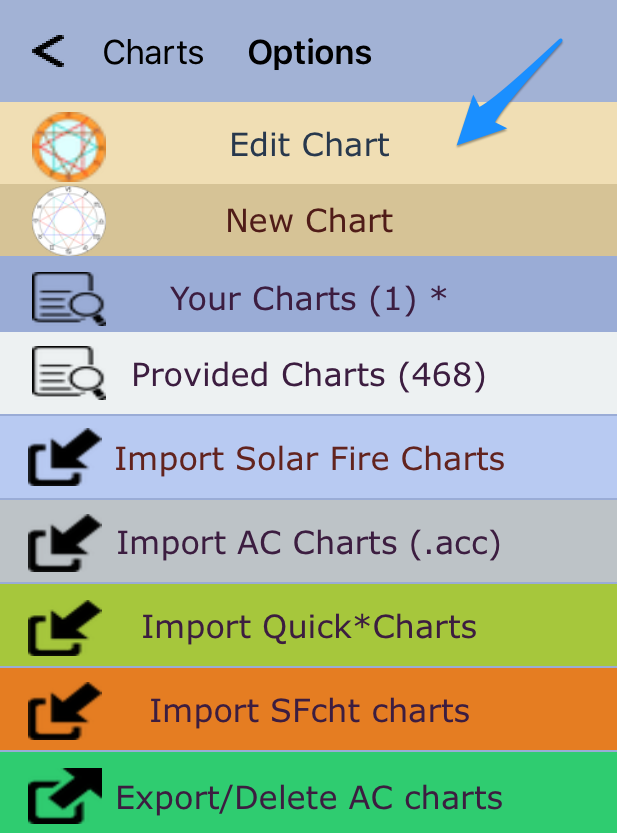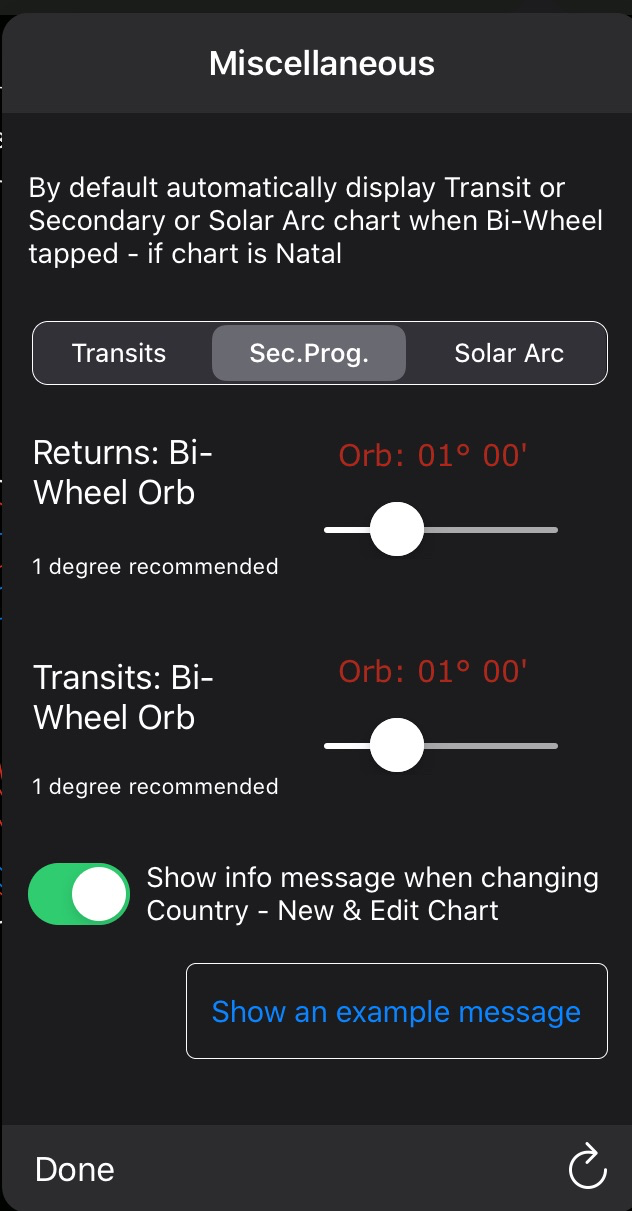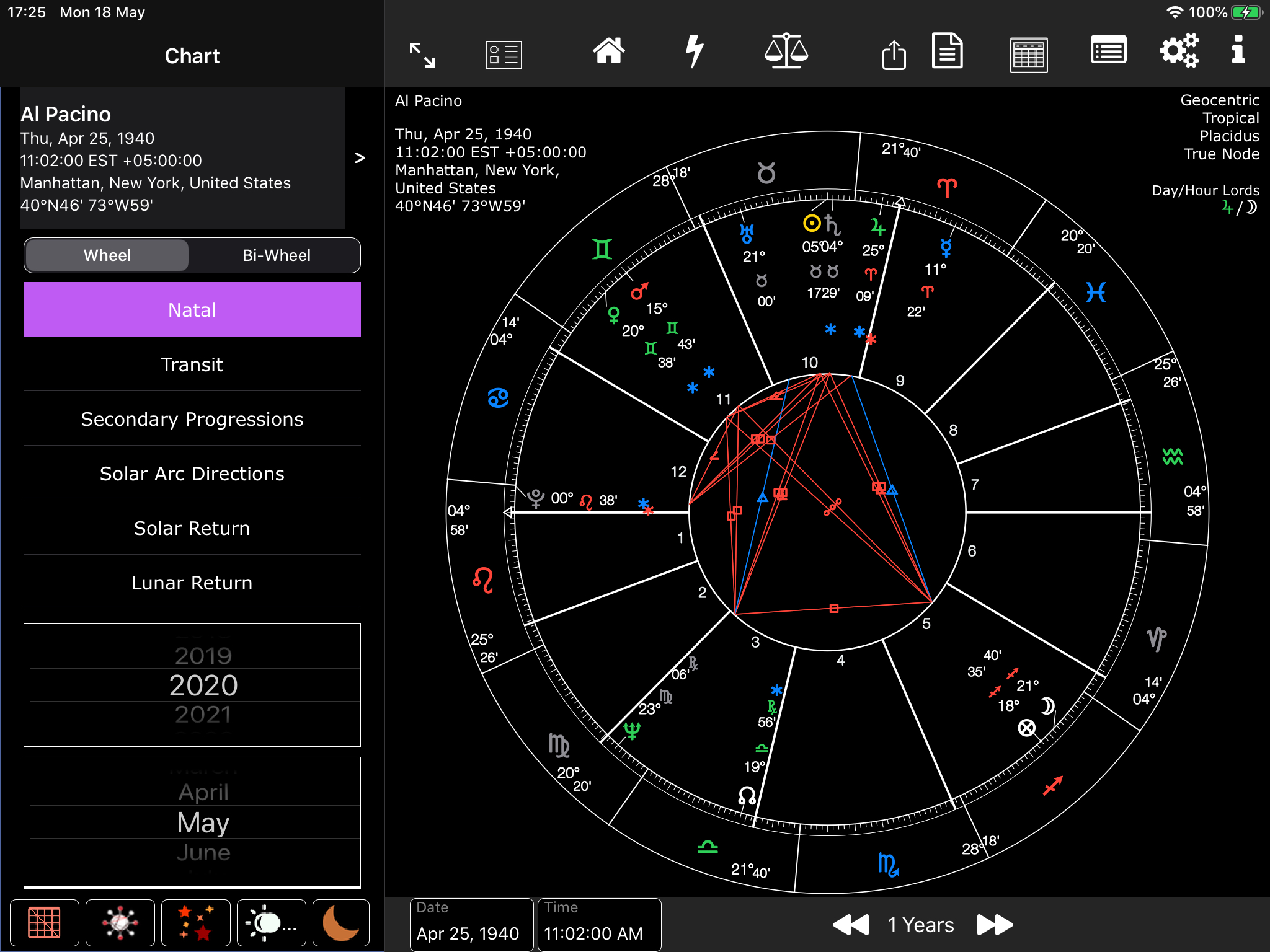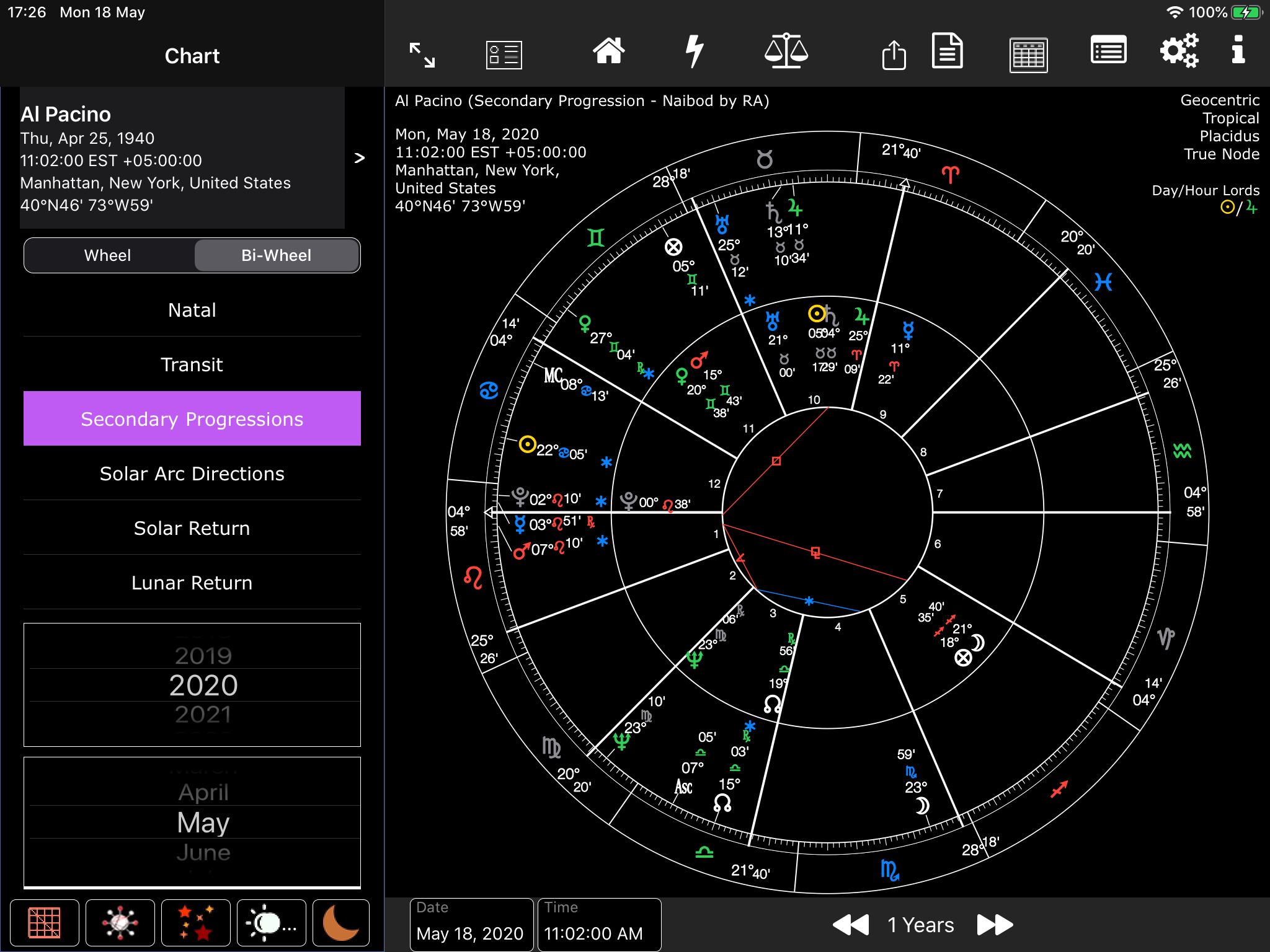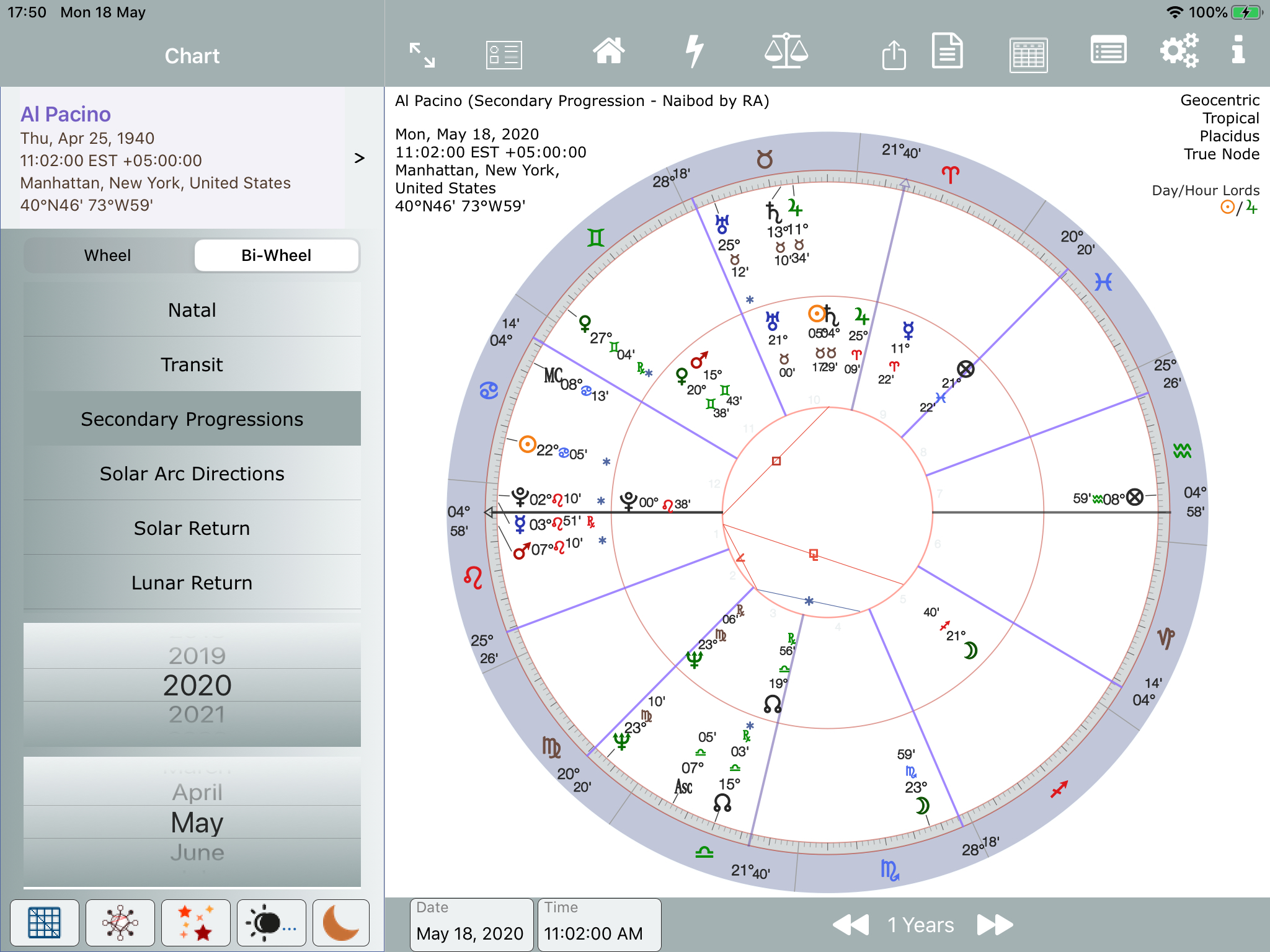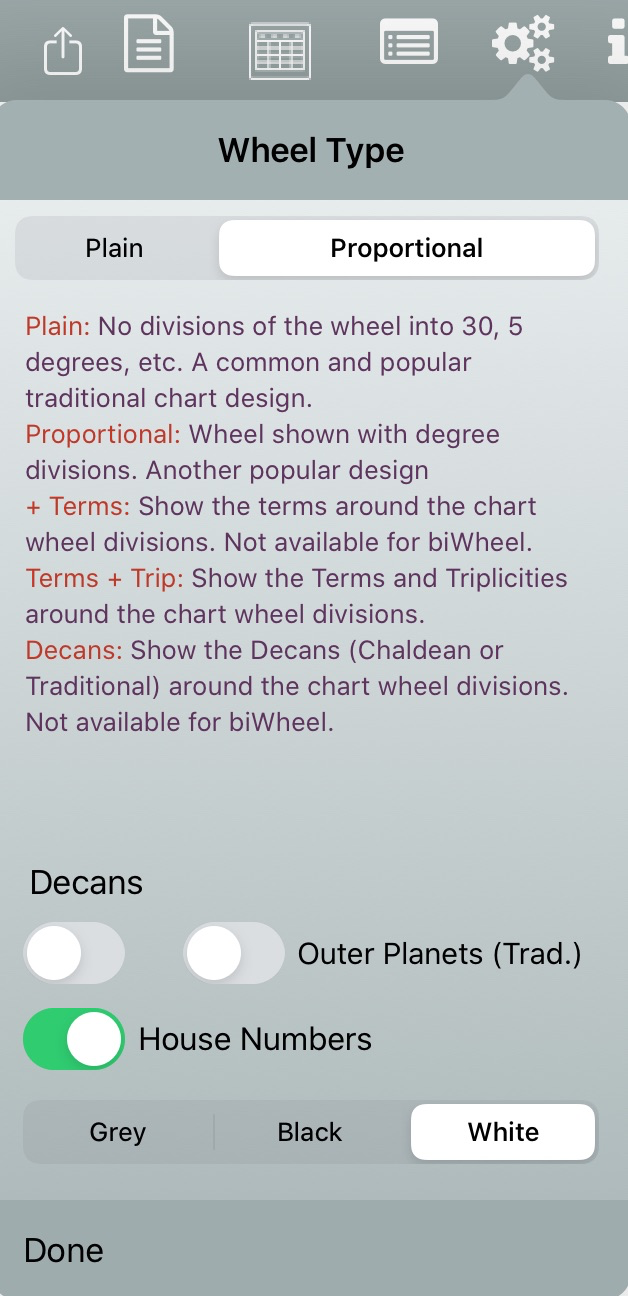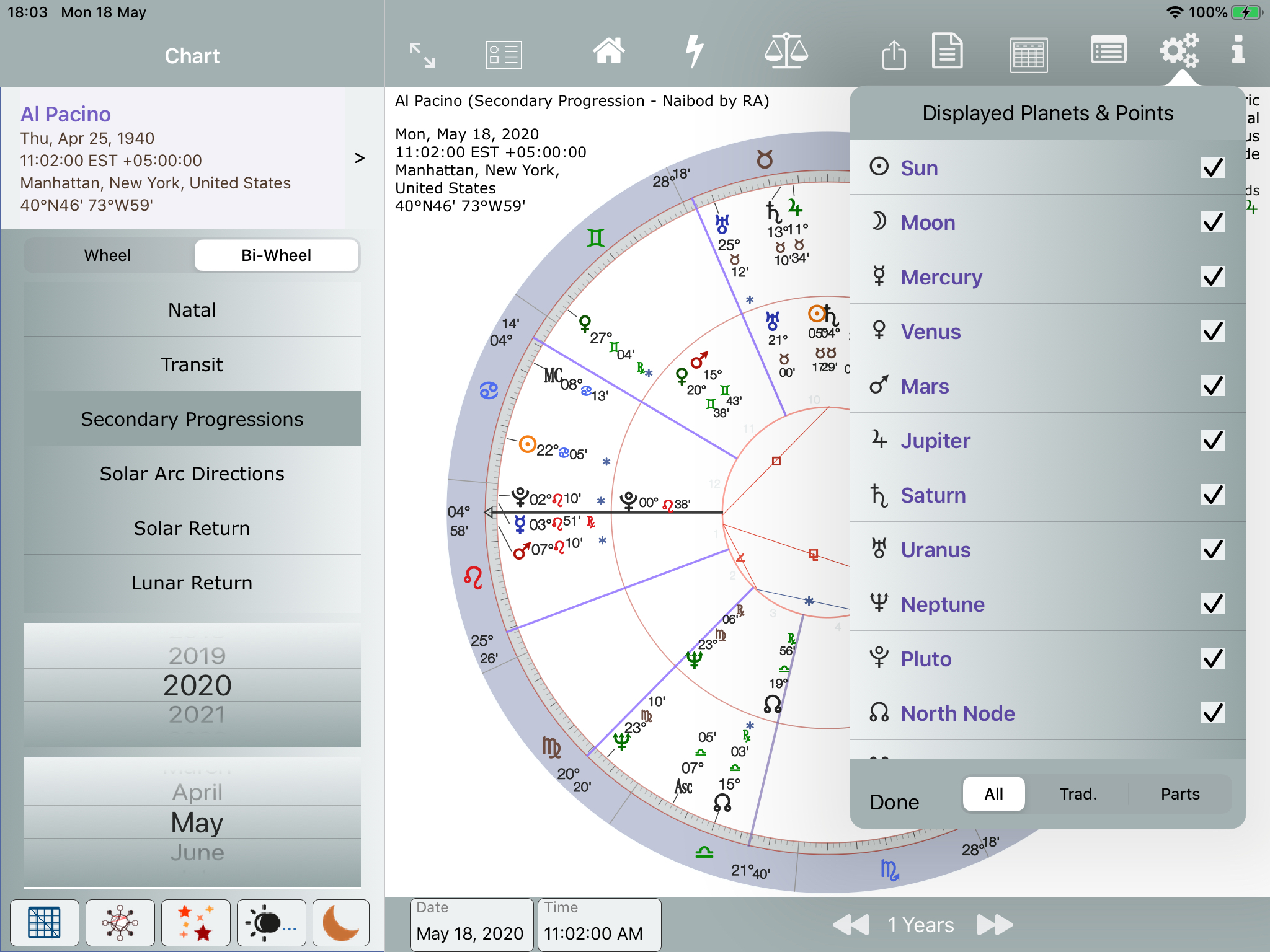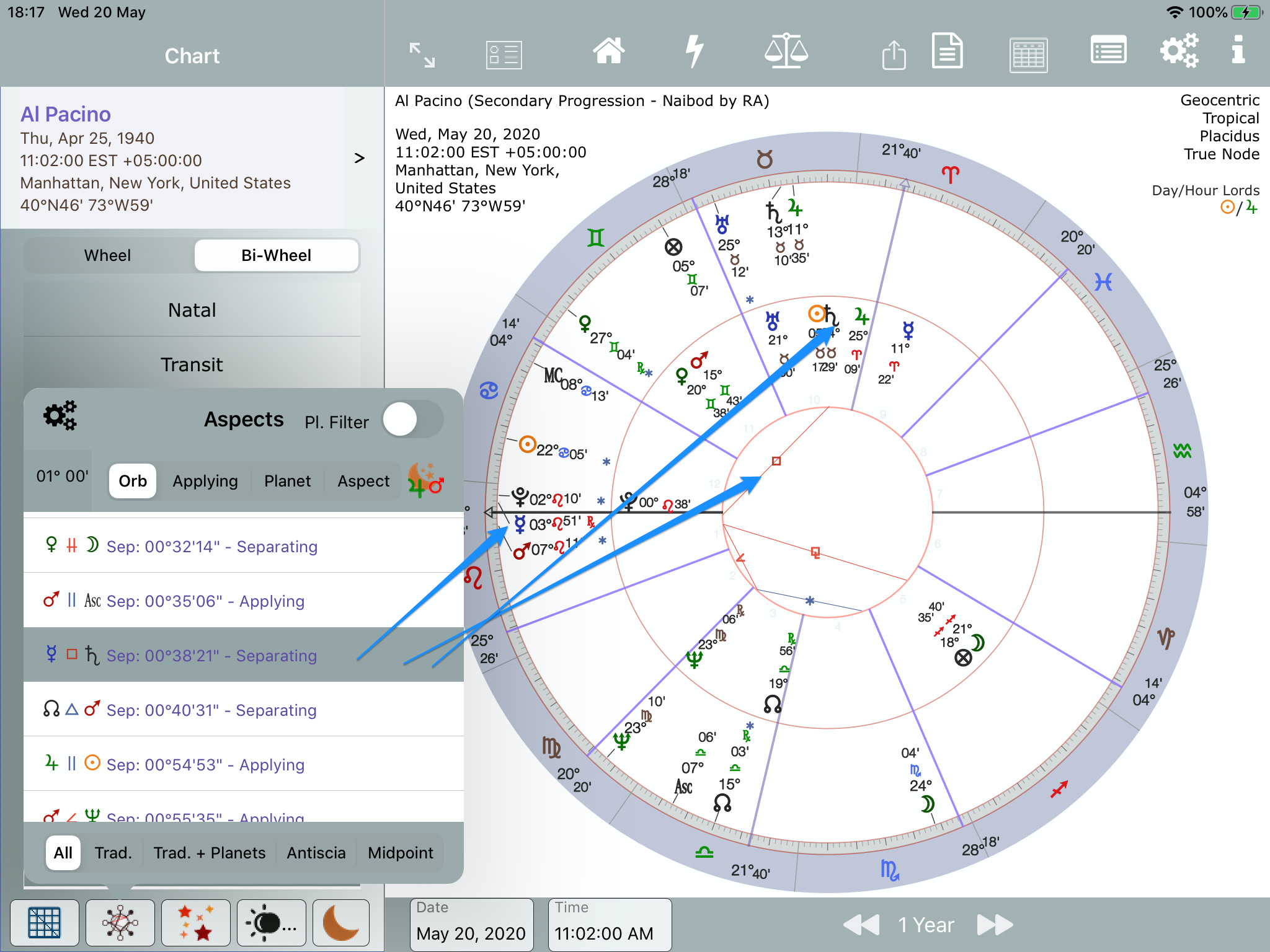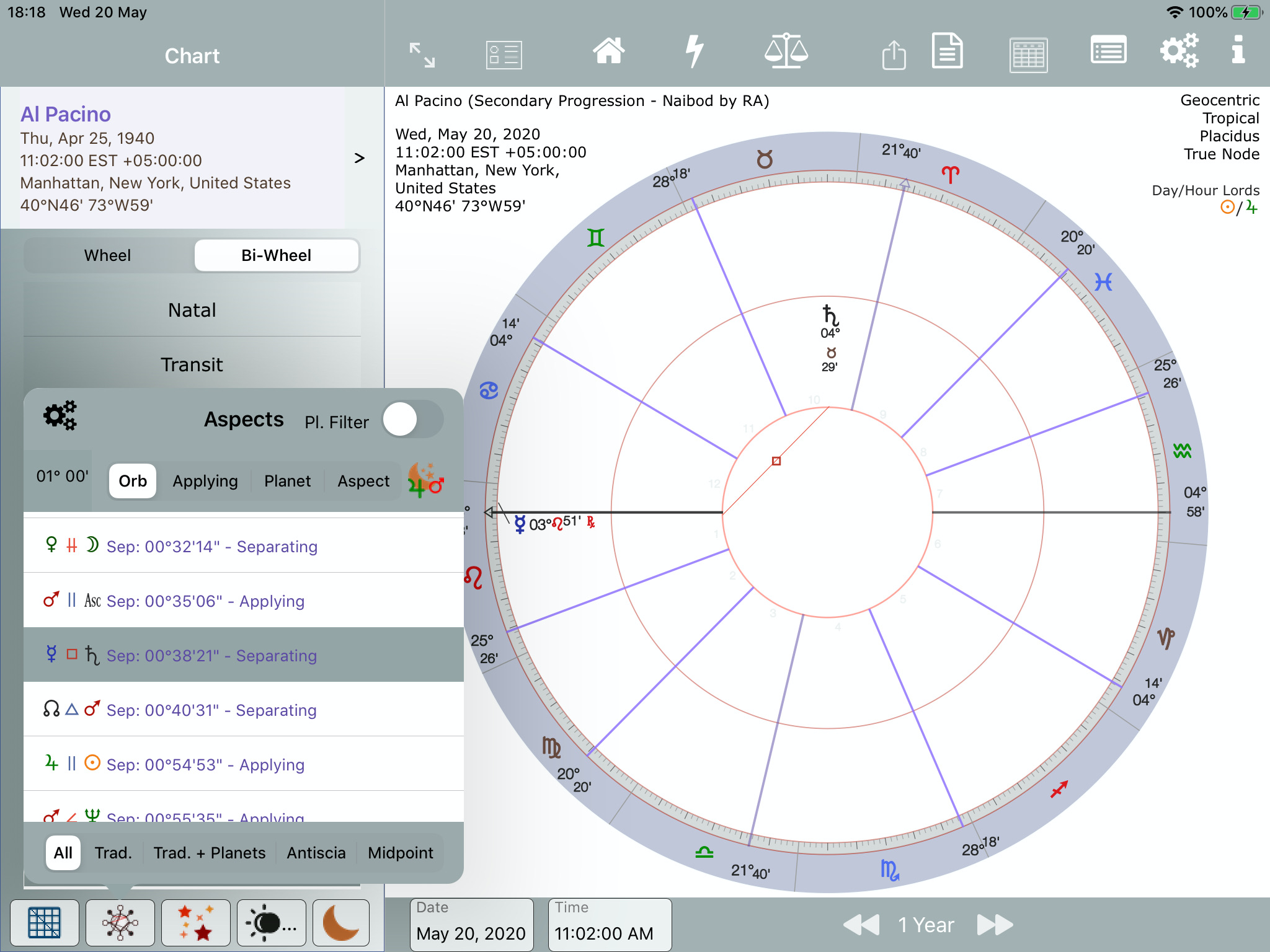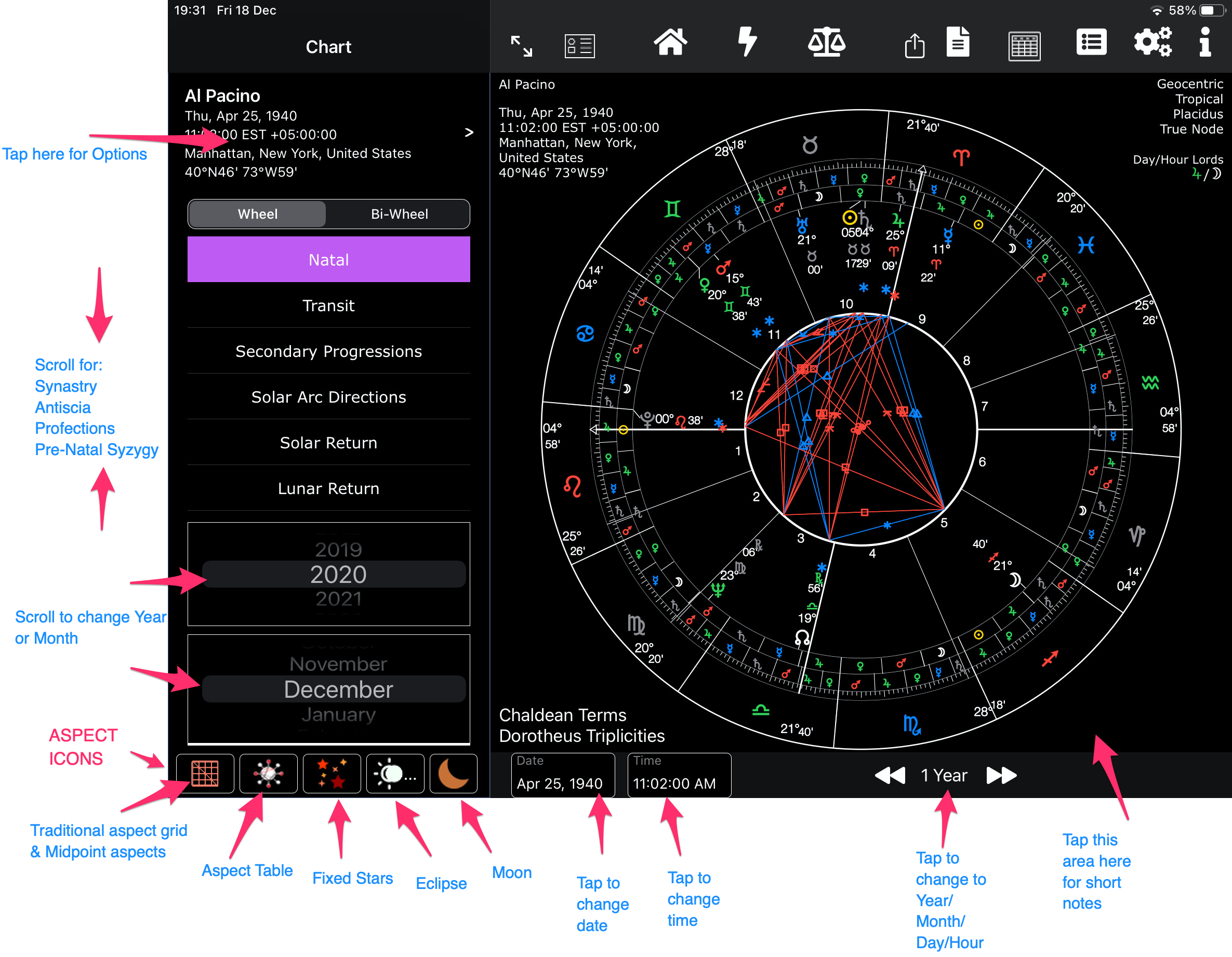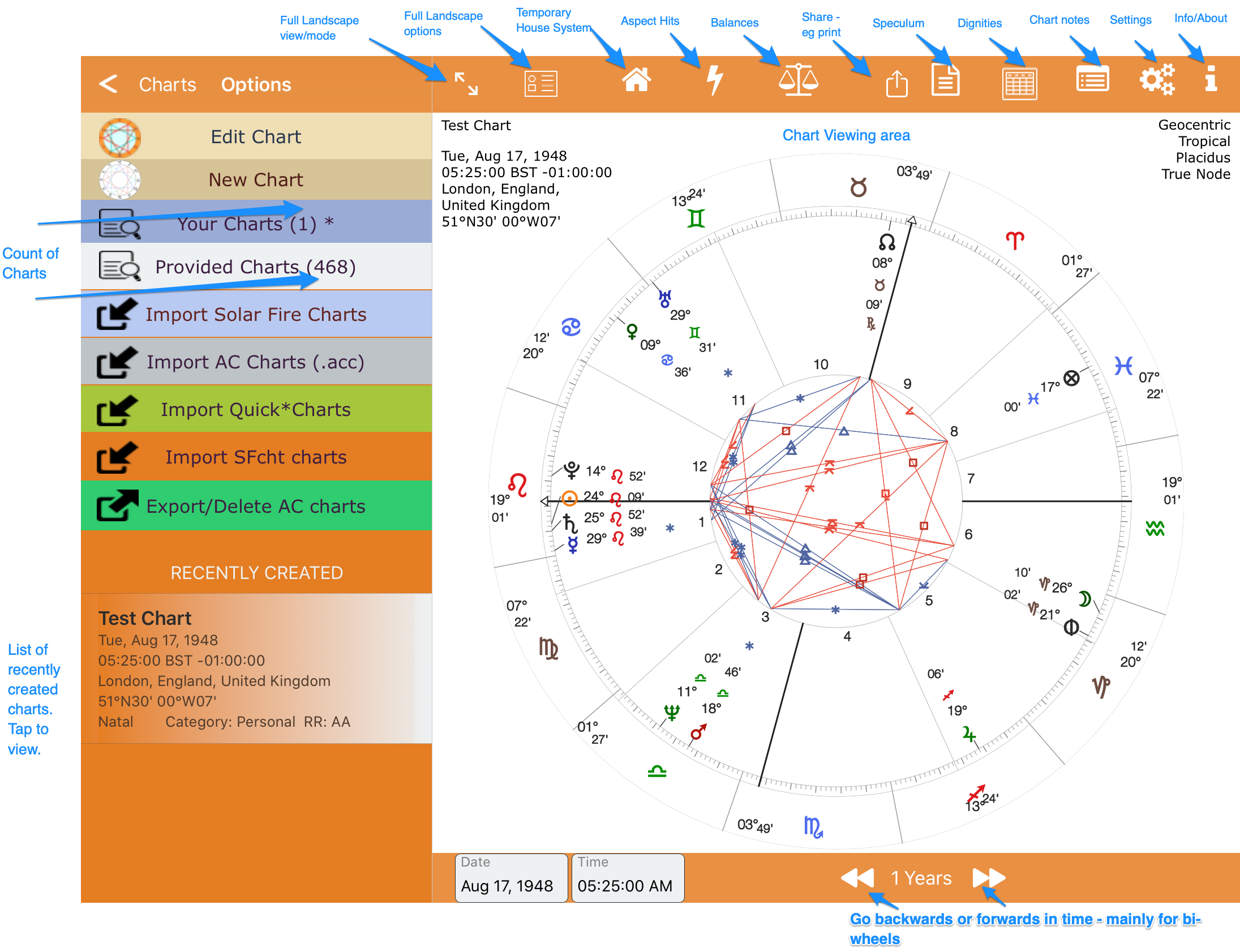Beginners and Intro to AC
Beginners-AstroConnexions.pdf AC-Menus-1.pdf
Newbie to the iPad/Mac, or newbie to astrological charts, concepts and best/usual practice? Start here! Or just want a clear overview of how to start out?
You may want to read this before you buy AC, it may help you decide if it’s for you.
AC (AstroConnexions) is easy to use, and has many advanced features built over five years of continuous development. But if you haven’t used an astrology app or program before it can seem overwhelming at first. You’ll soon get used to it though. Take it easy, don’t expect to figure it out, or do it all, in one session. The basics are easy. Some of the other stuff you will (may) need to learn. It’s an iPad app – astro-charting has never been so easy and affordable.
Here’s some recommended links to posts/articles that may (should) help you get to grips with AC. All articles/posts are on the AC website or on its Blog.
Configure AstroConnexions Concepts and Principles FAQ AC in action Quick Start animated GIFsQuick Start – includes many of the above links
Then there’s the AC searchable Knowledge Base
Knowledge BaseThe first thing most do after installing AC is to create (or cast) a chart for their birth or a friends’ birth. Known as a natal or radix chart. After you’ve read all the above of course!
Creating your first chartNote that all initial AC default settings when you buy it are configured to usual or best astrological practice as I understand it. By that I mean, for example that secondary progressed orbs to natal planets/points are set to 1 degree, The Zodiac is set to Tropical, single-wheel orbs are variable, eg 8 degrees for an opposition, 4 degrees for a sextile, etc. This means that that AC is usable straight away. As you get familiar with AC you can, of course change the settings.
If some of the things written here are incomprehensible to you don’t worry, just know that AC’s configurations are initially set to standard astrological settings.
Made a mistake creating your (first) chart? Here’s how to fix it.
Tap Edit Chart, and edit what you need to change. Similar to when you created a chart. Edit Chart always edits the currently displayed chart.
The chart’s time zone is wrong. You actually know what it should be. How to fix?
Time Zone fixI’ve got a lot of charts that I’ve created in another astrology app/program. How do I get them into AC?
Import/ExportWhat about historical charts? Pre 17th century?
Historical Charts – Culpeper Historical SynastryCreating synastry charts – comparison and composite charts
Synastry ChartsChanging the look of AstroConnexions – themes and chart colours
Colour Themes Chart ColoursYour Charts – sorting, filtering, browsing
Your ChartsDeleting a Chart
Deleting a ChartWhat are those lines in the centre of the chart?
Those are aspect lines. They show the aspects between planets and points. For an explanation of astrological aspect please do a Google search.
What are the blue stars and red stars (*) ? (answer, aspects from the fixed stars)
FAQLet’s go further and examine the left-hand side of the main view using Al Pacino’s natal chart. Get it from AC’s Provided charts.
We’ll look at his secondary progressed bi-wheel.
Provided Charts and Your ChartsBi-Wheel Tapped, options from the Miscellaneous menu view (this is for your info, you don’t need to do anything with these settings)
A Natal Chart, before tapping Bi-Wheel
Natal chart progressed by Secondary progression, Bi-Wheel tapped
Outer Wheel planets/points – secondary progression for the date shown May 18, 2020 @ 11:02:00 AM
Inner wheel planets/points – natal positions
Here’s more info on secondary progressions
Progressions and DirectionsBut my display/chart doesn’t look like this!
- I’m using Dark Mode which requires iOS 13+
- My settings may be different than yours
I’m using AC’s Grey Theme, and a proportional chart wheel. With a blue-ish fill for the outer zodiac wheel, purple wheel spokes, black for the ASC/Desc line spoke and a light purple for the MC/IC line spoke. A light red colour for the wheels except for the outer wheel. I’m using the default 1 degree orb for secondary progressed aspects to the natal chart.
Here’s the natal Chart in Light Mode – this is what you may see
Here’s the Bi-Wheel chart in Light Mode – this is what you may see
Outer Wheel planets/points – secondary progression for the date shown May 18, 2020 @ 11:02:00 AM
Inner wheel planets/points – natal positions
My Wheel SettingsHere’s my wheel settings – see if yours are the same
Animated GIF – wheel choice/type
Wheel Setting – animated GIFPlanets and Points selected
My Secondary Progression settings
Why has the progressed chart now got a date of May 18th 2020?
As a convenience when a chart that is selected as a Transit, sec. prog etc, the date of the progression/transit changes to a Now date. This does not happen with historical charts.
The concept of wheels within wheels
Looking at the above progressed chart Al Pacino Light Mode Bi-Wheel what is going on here?
It’s quite simple:
- the inner chart (planetary positions) is the natal chart
- the outer chart has the progressed planets/points
- the aspect lines now show the aspects to the natal chart planets/positions from the progressed chart planets/points positions.
- the house positions are always the natal chart positions, such as the Asc at 4 degrees 58 secs of Leo
Note a point can typically be the Ascendent (Asc), the Midheaven (MC)
The inner chart never changes – because it’s the natal chart. The outer chart (progressed planets and points) is the progressed chart. The progressed positions can be changed in a variety of ways.
Play around with the progressed positions – you can’t do anything that will cause problems with AC! If you get confused. just tap on the Natal button and start again. Thats what I do.
Looking at the aspects in the Aspect Table
Let’s start with natal aspects. Tap the Natal chart button for Al Pacino and then tap the Aspect Table icon. See below.
Here’s some guides to astrological glyphs
Astrological glyphs – Goes to an external web site.
Astrological glyphs – Goes to an external web site.
Sorted
The table is sorted by the smallest separation of an aspect, ie the closest aspects first, as these are usually deemed the most effective. Let’s see how the aspects in the aspect table relate to what’s shown on the chart.
The arrowed aspects shown in the above screenshot:
- Moon 120 degrees to MC, a trine. The aspect line is shown in blue. A trine is considered ‘easy’.
- Mars semi-square (45 degrees) to Pluto. The aspect line is shown in red. A trine is considered ‘difficult’.
Note that parallel aspect can’t be shown on the chart.
Al Pacino’s bi-wheel aspects – his secondary progressed aspects
Al Pacino’s progressed Mercury square (90 degrees) to his radical Saturn (ie his natal Saturn) – isolated.
Just tap the Mercury square Saturn aspect in the Aspect Table to see the isolated aspect. Tap again to revert back to show all the aspects.
The top left corner of the Aspect Table show the orb allowed for the currently displayed chart. Note that it is possible to different orb values for different types of charts.
Main/Opening View
A look at the Options View and the standard menu buttons
- A single tap below Info/About button area will bring up the Snapshot view.
- Single tap over a planet in the chart to view some of its details.
- Note Full Landscape Options are only effective when full landscape is displayed.
- Note the Aspects Hits button also incorporate saving a Return chart (when a Return chart is displayed).
- An asterisk indicates whether the currently viewed chart is from Your charts or Provided Charts database.
Please Investigate any of the above menus options etc, using AC’s knowledge base:
Knowledge BaseEnjoy!


